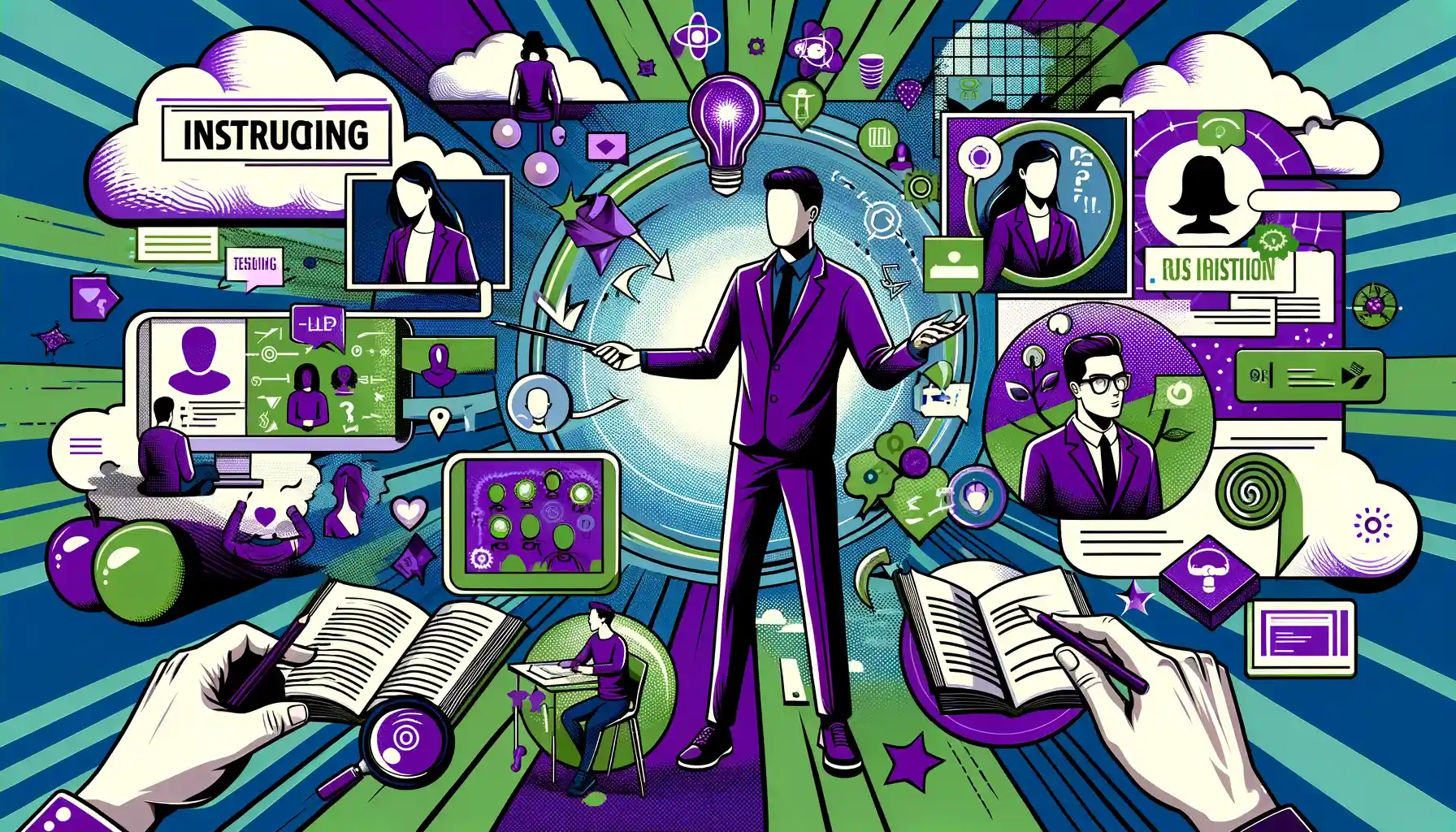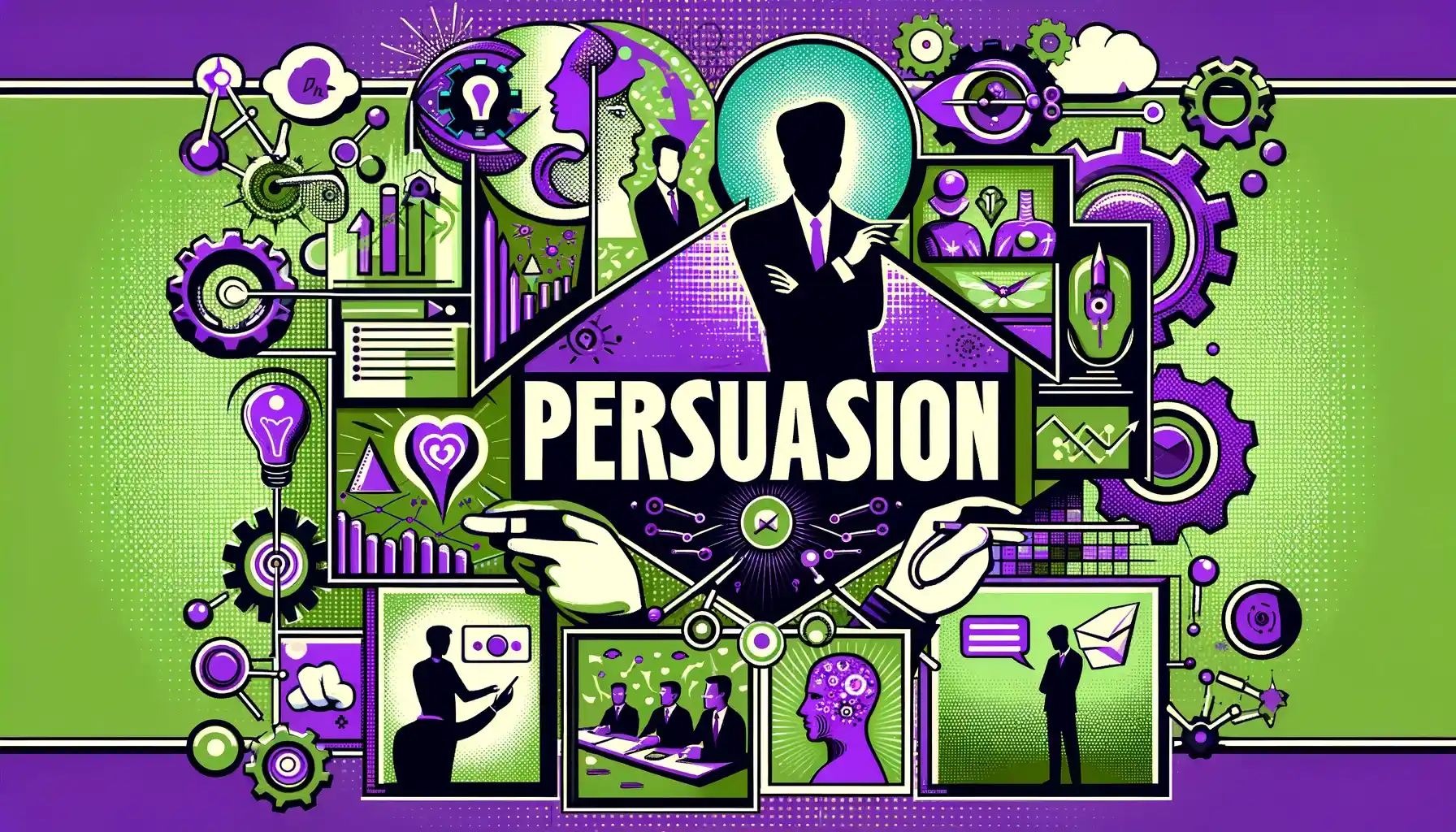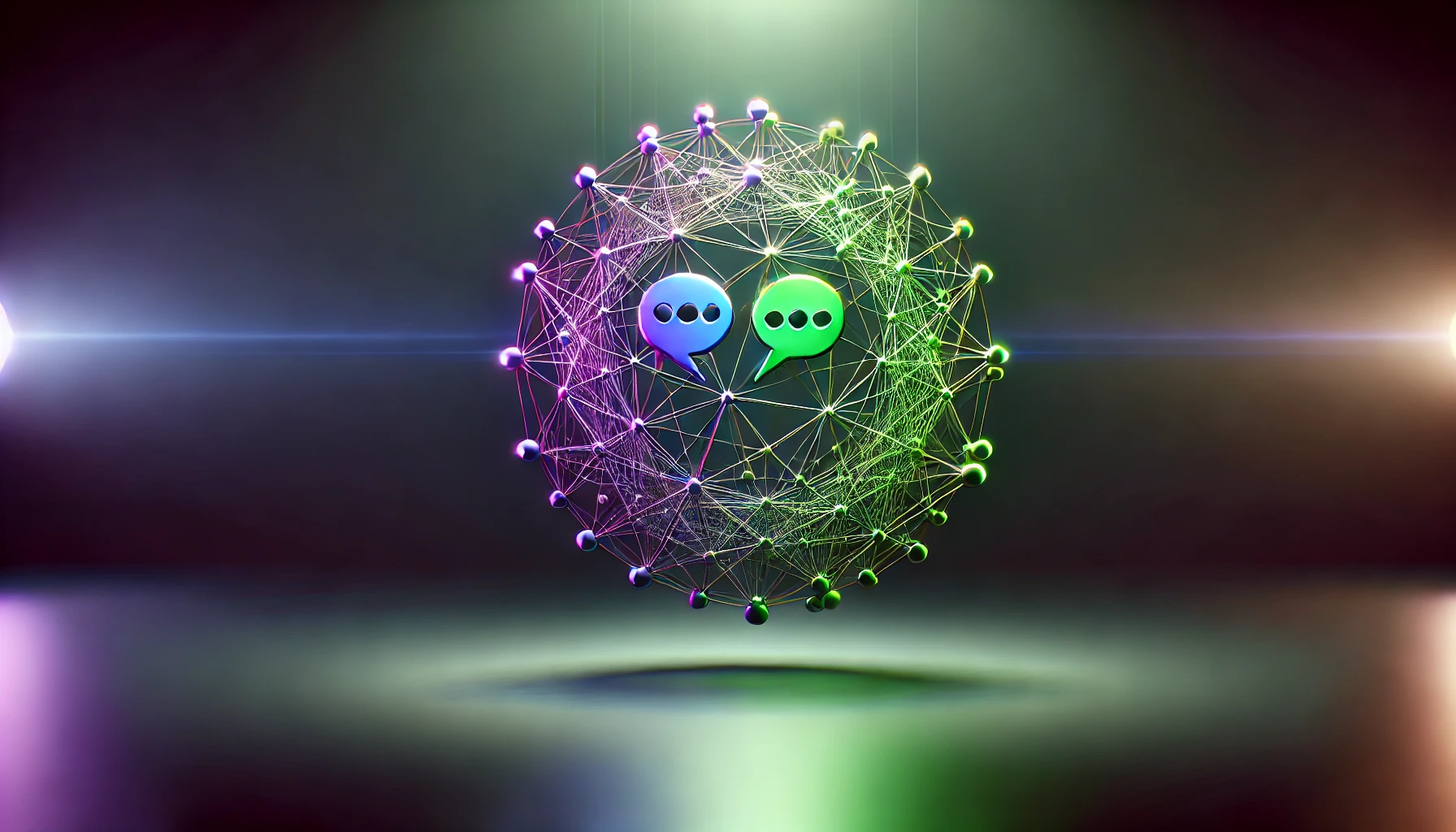Introduction to Conflict Resolution
<h3><span style="font-weight: 400;">Conflict is inevitable in human interaction in both personal and professional settings. Navigating and resolving conflicts effectively is crucial for maintaining healthy relationships and productive environments. Conflict resolution goes beyond merely settling disputes; it involves understanding underlying issues, fostering open communication, and working toward mutually beneficial outcomes. By mastering this skill, you can transform conflicts into opportunities for growth and collaboration. This skill is part of the “<a class='no-underline text-accent'
href="https://wiseworld.ai/blog/communication" target="_blank">Communication</a>” category of soft skills.</span></h3>
<h3><span style="font-weight: 400;">Conflict resolution is essential for everyone, not just for leaders or mediators. Effective conflict resolution skills can help you build stronger relationships, foster a positive environment, and achieve better outcomes, whether you're dealing with disagreements at work, misunderstandings in your community, or personal disputes. This article will explore the various aspects of conflict resolution, providing practical tips and strategies to help you resolve conflicts constructively and amicably.</span></h3>
<h3><strong>Definition of Conflict Resolution</strong></h3>
<h3><span style="font-weight: 400;">Conflict resolution is the process of addressing and managing disagreements or disputes between individuals or groups. It involves identifying the root causes of the conflict, facilitating open communication, and finding solutions that satisfy all parties involved. Effective conflict resolution requires a combination of skills, including active listening, empathy, negotiation, and problem-solving.</span></h3>
<h3><span style="font-weight: 400;">Imagine conflict resolution as a dance where both parties move in harmony towards a common goal. Just as dancers need to be aware of each other’s movements and maintain balance, effective conflict resolution requires mutual understanding and cooperation to achieve a harmonious outcome.</span></h3>
<h3><strong>Importance of Effective Conflict Resolution</strong></h3>
<h3><span style="font-weight: 400;">Effective conflict resolution is a cornerstone of healthy relationships and successful organizations. It plays a critical role in:</span></h3>
<ul>
<li style="font-weight: 400;" aria-level="1">
<h3><strong>Maintaining Harmony:</strong><span style="font-weight: 400;"> Resolving conflicts promptly and effectively helps maintain a peaceful and cooperative environment, whether at home, in the workplace, or within the community.</span></h3>
</li>
<li style="font-weight: 400;" aria-level="1">
<h3><strong>Enhancing Relationships:</strong><span style="font-weight: 400;"> By addressing conflicts constructively, individuals can strengthen their relationships and build trust. This leads to better communication and deeper connections.</span></h3>
</li>
<li style="font-weight: 400;" aria-level="1">
<h3><strong>Improving Productivity:</strong><span style="font-weight: 400;"> In professional settings, unresolved conflicts can hinder productivity and create a toxic work environment. Effective conflict resolution ensures that teams can work together efficiently and focus on common goals.</span></h3>
</li>
<li style="font-weight: 400;" aria-level="1">
<h3><strong>Promoting Personal Growth:</strong><span style="font-weight: 400;"> Engaging in conflict resolution encourages personal growth by helping individuals develop critical thinking, emotional intelligence, and problem-solving skills.</span></h3>
</li>
</ul>
<h3><span style="font-weight: 400;">As Mahatma Gandhi once said, "<strong>An eye for an eye only ends up making the whole world blind.</strong>" Effective conflict resolution seeks to prevent escalation and find peaceful solutions that benefit all parties involved.</span></h3>Benefits of Effective Conflict Resolution
<h3><span style="font-weight: 400;">If we are on the same page and accept conflict as an inevitable byproduct of communication and negotiation, the main benefit of effective conflict resolution is good teamwork or, more precisely, a civilized relationship. However, delving deeper, the benefits of mastering conflict resolution are extensive and impact various aspects of life. Here are some key advantages:</span></h3>
<h3><strong>Stronger Relationships:</strong><span style="font-weight: 400;"> Effective conflict resolution fosters trust and mutual respect, leading to stronger and more resilient relationships. When conflicts are resolved constructively, parties involved can move forward with a deeper understanding and appreciation of each other, reinforcing their bond.</span></h3>
<h3><strong>Enhanced Communication:</strong><span style="font-weight: 400;"> By resolving conflicts, individuals can improve their communication skills, leading to clearer and more effective interactions. Effective conflict resolution often requires articulating thoughts and feelings clearly and listening actively, which enhances overall communication proficiency.</span></h3>
<h3><strong>Increased Understanding:</strong><span style="font-weight: 400;"> Addressing conflicts helps individuals understand different perspectives and appreciate diverse viewpoints. This not only promotes empathy and inclusivity but also enriches personal and professional interactions. By seeing the world through someone else's eyes, individuals can build more meaningful and compassionate connections.</span></h3>
<h3><strong>Personal Empowerment:</strong><span style="font-weight: 400;"> Successfully resolving conflicts boosts confidence and empowers individuals to handle future disputes with greater ease. This sense of empowerment comes from knowing that one has the skills and resilience to navigate difficult conversations and find mutually beneficial solutions.</span></h3>
<h3><strong>Reduced Stress:</strong><span style="font-weight: 400;"> Effective conflict resolution reduces tension and stress, creating a more positive and harmonious environment. Unresolved conflicts can lead to ongoing stress and anxiety, whereas addressing issues promptly and constructively can restore peace and stability.</span></h3>
<h3><strong>Better Team Dynamics:</strong><span style="font-weight: 400;"> In a team setting, conflict resolution can lead to more effective collaboration and productivity. Teams that manage conflicts well are often more cohesive and capable of leveraging diverse talents and perspectives to achieve common goals.</span></h3>
<h3><strong>Improved Problem-Solving Skills:</strong><span style="font-weight: 400;"> The process of resolving conflicts often involves critical thinking and problem-solving. By engaging in these processes, individuals enhance their ability to analyze situations, think creatively, and develop effective solutions.</span></h3>
<h3><strong>Greater Innovation:</strong><span style="font-weight: 400;"> When conflicts are resolved effectively, it can lead to a more open exchange of ideas and a willingness to take risks. This environment of trust and mutual respect can foster innovation and creativity within teams and organizations.</span></h3>
<h3><strong>Higher Morale:</strong><span style="font-weight: 400;"> In environments where conflicts are managed well, individuals tend to feel more valued and respected. This positive atmosphere can lead to higher morale, greater job satisfaction, and improved overall well-being.</span></h3>
<h3><strong>Sustainable Solutions:</strong><span style="font-weight: 400;"> Effective conflict resolution aims for solutions that are sustainable and acceptable to all parties involved. This long-term perspective helps in creating agreements that stand the test of time and prevent the recurrence of similar issues.</span></h3>
<h3><span style="font-weight: 400;">In conclusion, the benefits of effective conflict resolution extend far beyond the immediate resolution of disputes. They contribute to stronger relationships, enhanced communication, increased understanding, personal empowerment, reduced stress, and improved team dynamics. By mastering conflict resolution skills, individuals and organizations can create more harmonious, productive, and innovative environments.</span></h3>Developing the Skill of Conflict Resolution
<h3><span style="font-weight: 400;">Developing conflict resolution skills requires practice, patience, and a willingness to understand and address underlying issues. Here are some strategies to enhance your conflict resolution abilities:</span></h3>
<h3><strong>Practice Active Listening:</strong><span style="font-weight: 400;"> Active listening involves fully concentrating on the speaker, understanding their message, and responding thoughtfully. This skill is essential for identifying the root causes of conflicts and finding mutually agreeable solutions. Show that you are genuinely interested in the other person's perspective by maintaining eye contact, nodding, and providing verbal affirmations.</span></h3>
<h3><strong>Stay Calm and Composed:</strong><span style="font-weight: 400;"> Maintaining composure during conflicts allows you to think clearly and respond rationally. Deep breathing and mindfulness techniques can help you stay calm under pressure. When you remain composed, you create a more conducive environment for resolving the issue constructively.</span></h3>
<h3><strong>Seek Common Ground:</strong><span style="font-weight: 400;"> Focus on finding common interests and shared goals to build a foundation for resolving the conflict. This approach fosters collaboration and mutual understanding. By identifying areas of agreement, you can create a sense of partnership and work together towards a resolution.</span></h3>
<h3><strong>Communicate Clearly and Respectfully:</strong><span style="font-weight: 400;"> Clear and respectful communication is key to resolving conflicts. Avoid blame and criticism, and instead, express your thoughts and feelings constructively. <a class='no-underline text-accent'
href="https://www.bumc.bu.edu/facdev-medicine/files/2011/08/I-messages-handout.pdf" target="_blank">Use "I" statements</a> to take ownership of your emotions and experiences without accusing the other person. For example, say "I feel frustrated when..." instead of "You always...".</span></h3>
<h3><strong>Identify Underlying Issues:</strong><span style="font-weight: 400;"> Often, conflicts are symptoms of deeper, unresolved issues. Take the time to explore and address these underlying problems to prevent recurring conflicts. Ask probing questions and encourage open dialogue to uncover the root causes.</span></h3>
<h3><strong>Develop Problem-Solving Skills:</strong><span style="font-weight: 400;"> Conflict resolution often requires creative problem-solving. Work on your ability to generate and evaluate potential solutions, considering the needs and interests of all parties involved. <a class='no-underline text-accent'
href="https://hbr.org/2018/03/better-brainstorming" target="_blank">Brainstorming sessions</a> can be a valuable tool for developing innovative resolutions.</span></h3>
<h3><strong>Practice Patience and Perseverance:</strong><span style="font-weight: 400;"> Resolving conflicts can be a time-consuming process. Be patient and persistent, understanding that finding a lasting solution may require multiple discussions and ongoing effort. Show commitment to the process and be willing to revisit the issue as needed.</span></h3>
<h3><strong>Learn from Each Conflict:</strong><span style="font-weight: 400;"> Every conflict provides an opportunity for learning and growth. Reflect on past conflicts to identify what worked well and what could be improved. Use these insights to enhance your conflict resolution skills over time.</span></h3>
<h3><strong>Seek Training and Mentorship:</strong><span style="font-weight: 400;"> Consider seeking out formal training in conflict resolution or finding a mentor who excels in this area. Workshops, courses, and coaching can provide valuable tools and techniques for managing conflicts more effectively.</span></h3>
<h3><span style="font-weight: 400;">By incorporating these strategies into your approach to conflict resolution, you can develop the skills needed to navigate disputes constructively and achieve positive outcomes. Whether in personal relationships or professional settings, mastering conflict resolution will enable you to foster healthier, more productive interactions.</span></h3>Training to Improve Conflict Resolution
<p><span style="font-weight: 400;">Improving your conflict resolution skills requires practical experience and deliberate practice. Here are some effective training methods:</span></p>
<p><strong>Role-Playing Game: "Conflict Navigator"</strong></p>
<p><span style="font-weight: 400;">One effective training exercise is a role-playing game called "<strong>Conflict Navigator</strong>." This game helps participants practice resolving conflicts in a safe and structured environment.</span></p>
<p><strong>Setup:</strong></p>
<ul>
<li style="font-weight: 400;" aria-level="1"><strong>Conflict Scenarios:</strong><span style="font-weight: 400;"> Write down various <a class='no-underline text-accent'
href="chrome-extension://efaidnbmnnnibpcajpcglclefindmkaj/https://advising.ecu.edu/wp-content/pv-uploads/sites/315/2020/07/M8L4-Conflict-Scenarios-Worksheet.pdf" target="_blank">conflict scenarios</a> on cards, such as workplace disagreements, family disputes, or community conflicts. Create at least 10 scenarios.</span></li>
<li style="font-weight: 400;" aria-level="1"><strong>Roles:</strong><span style="font-weight: 400;"> Assign roles to participants, including the conflicting parties and a mediator.</span></li>
</ul>
<p><strong>Gameplay:</strong></p>
<ol>
<li style="font-weight: 400;" aria-level="1"><span style="font-weight: 400;">In each round, a scenario card is drawn, and participants act out the conflict, taking on their assigned roles.</span></li>
<li style="font-weight: 400;" aria-level="1"><span style="font-weight: 400;">The mediator facilitates the discussion, encouraging open communication and guiding the parties toward a resolution.</span></li>
<li style="font-weight: 400;" aria-level="1"><span style="font-weight: 400;">The conflicting parties should present their points with as much passion and logic as possible, even resorting to common fallacies to test the mediator's skills.</span></li>
<li style="font-weight: 400;" aria-level="1"><span style="font-weight: 400;">The mediator's goal is to identify common ground and steer the conversation toward mutual understanding.</span></li>
<li style="font-weight: 400;" aria-level="1"><span style="font-weight: 400;">If at any point, one of the three sides (two parties and the mediator) objects to the approach or fairness, the remaining group members act as judges to provide feedback and direction.</span></li>
</ol>
<p><strong>Debrief:</strong><span style="font-weight: 400;"> After each scenario, discuss the outcomes and the strategies used. Reflect on what worked well and what could be improved. This reflection helps in understanding different approaches and fine-tuning your skills.</span></p>
<p><strong>Establish Your Conflict Resolution Group</strong></p>
<p><span style="font-weight: 400;">Creating a conflict resolution group within your community or workplace can provide ongoing opportunities to practice and refine your skills. This group can serve as a support network and a platform for sharing experiences and learning from others. Regular meetings and discussions can keep members engaged and continually improving.</span></p>
<p><strong>Analyze Real-World Scenarios</strong></p>
<p><span style="font-weight: 400;">The <a class='no-underline text-accent'
href="https://www.fao.org/4/a0032e/a0032e08.htm" target="_blank">world is full of conflicts</a> at various levels and subjects. Analyzing these conflicts from an external perspective can be incredibly insightful. Try to abstract and deconstruct the conflicts:</span></p>
<p><strong>Identify the Real Needs:</strong><span style="font-weight: 400;"> Determine the fundamental needs of both parties involved in the conflict.</span></p>
<p><strong>Fisher Conflict Management Model:</strong><span style="font-weight: 400;"> This model helps to understand the source of conflicts better. It categorizes conflicts into three layers:</span></p>
<ul>
<li style="font-weight: 400;" aria-level="2"><strong>Positions:</strong><span style="font-weight: 400;"> What we say we want.</span></li>
<li style="font-weight: 400;" aria-level="2"><strong>Interests:</strong><span style="font-weight: 400;"> Why we want what we say we want.</span></li>
<li style="font-weight: 400;" aria-level="2"><strong>Needs:</strong><span style="font-weight: 400;"> What we must have.</span></li>
</ul>
<p><span style="font-weight: 400;">By dissecting conflicts into these layers, you can develop a deeper understanding of the underlying issues and work towards more effective resolutions. Engaging in these training methods can enhance your conflict resolution skills, making you more adept at handling disputes effectively and constructively. This continuous practice and reflection will enable you to navigate conflicts with greater confidence and competence.</span></p>Conflict Resolution in Different Working Scenarios
<h3><span style="font-weight: 400;">Conflict resolution varies across different contexts. Here are some examples of conflict resolution in various settings:</span></h3>
<h3><strong>Professional Settings</strong></h3>
<h3><span style="font-weight: 400;">In professional environments, effective conflict resolution is essential for maintaining a positive workplace culture and ensuring team productivity. Key scenarios include:</span></h3>
<ul>
<li style="font-weight: 400;" aria-level="1">
<h3><strong>Team Disagreements:</strong><span style="font-weight: 400;"> Resolving conflicts within teams is crucial for maintaining collaboration and achieving common goals. Encourage open dialogue and foster a culture of respect and understanding. For example, during a team meeting where disagreements arise, a mediator can facilitate the discussion, ensuring each team member's viewpoint is heard and respected.</span></h3>
</li>
<li style="font-weight: 400;" aria-level="1">
<h3><strong>Manager-Employee Conflicts:</strong><span style="font-weight: 400;"> Addressing conflicts between managers and employees requires sensitivity and fairness. Focus on finding solutions that meet both parties' needs and maintain a positive working relationship. For instance, a manager might have regular check-ins to discuss any issues and work together on finding resolutions that satisfy both management and staff concerns.</span></h3>
</li>
<li style="font-weight: 400;" aria-level="1">
<h3><strong>Client Relations:</strong><span style="font-weight: 400;"> Handling conflicts with clients professionally and empathetically can preserve and strengthen business relationships. Listen to their concerns, acknowledge their perspectives, and work towards mutually beneficial solutions. An example could be a service issue where a client is dissatisfied; the business representative should actively listen, apologize sincerely, and propose a fair resolution to regain trust.</span></h3>
</li>
</ul>
<h3><strong>Community Events</strong></h3>
<h3><span style="font-weight: 400;">In community settings, effective conflict resolution helps build a sense of unity and collective purpose. Key scenarios include:</span></h3>
<ul>
<li style="font-weight: 400;" aria-level="1">
<h3><strong>Neighborhood Disputes:</strong><span style="font-weight: 400;"> Resolving conflicts between neighbors promotes a harmonious living environment. Mediation and open communication can help address issues and find agreeable solutions. For example, a disagreement over property boundaries can be resolved by organizing a meeting with a neutral mediator who helps both parties reach a fair agreement.</span></h3>
</li>
<li style="font-weight: 400;" aria-level="1">
<h3><strong>Community Projects:</strong><span style="font-weight: 400;"> Conflicts may arise during community projects or initiatives. Encouraging collaboration and mutual respect can ensure the success of these endeavors. An example might be differing opinions on a community park design, where project leaders can hold workshops to gather input and find a consensus.</span></h3>
</li>
<li style="font-weight: 400;" aria-level="1">
<h3><strong>Public Forums:</strong><span style="font-weight: 400;"> Facilitating respectful and constructive dialogue in public forums can address community concerns and foster a sense of belonging and cooperation. For instance, during a town hall meeting, a facilitator can ensure that everyone has a chance to speak and that the discussion remains respectful and focused on finding solutions.</span></h3>
</li>
</ul>
<h3><strong>Social Gatherings</strong></h3>
<h3><span style="font-weight: 400;">Social gatherings provide opportunities to practice conflict resolution in a more relaxed setting. Key scenarios include:</span></h3>
<ul>
<li style="font-weight: 400;" aria-level="1">
<h3><strong>Family Disputes:</strong><span style="font-weight: 400;"> Navigating conflicts within families requires patience and empathy. Focus on understanding each other's perspectives and finding common ground. For example, during a family gathering, if a disagreement arises about holiday plans, family members can discuss their preferences openly and work towards a compromise that accommodates everyone.</span></h3>
</li>
<li style="font-weight: 400;" aria-level="1">
<h3><strong>Friendship Conflicts:</strong><span style="font-weight: 400;"> Resolving conflicts with friends strengthens relationships and promotes mutual understanding. Communicate openly and honestly to address any issues. An example might be a misunderstanding between friends; addressing it directly and with empathy can help clear up any confusion and restore the relationship.</span></h3>
</li>
<li style="font-weight: 400;" aria-level="1">
<h3><strong>Social Events:</strong><span style="font-weight: 400;"> Conflicts may arise at social events due to differing opinions or misunderstandings. Practice active listening and respectful communication to resolve these conflicts amicably. For instance, at a dinner party, if a heated discussion about politics occurs, hosts can guide the conversation back to a more neutral topic to maintain a pleasant atmosphere.</span></h3>
</li>
</ul>
<h3><span style="font-weight: 400;">By understanding and addressing conflicts in various scenarios, you can develop a more versatile and effective approach to conflict resolution. This adaptability will help you navigate disputes smoothly and maintain positive relationships across different aspects of your life.</span></h3>Overcoming Barriers to Conflict Resolution
<h3><span style="font-weight: 400;">Several barriers can impede effective conflict resolution, including social anxiety, cultural differences, and lack of experience. Here are strategies to overcome these barriers:</span></h3>
<h3><strong>Addressing Social Anxiety</strong></h3>
<h3><span style="font-weight: 400;"><a class='no-underline text-accent'
href="https://www.nimh.nih.gov/health/publications/social-anxiety-disorder-more-than-just-shyness#:~:text=A%20person%20with%20social%20anxiety,a%20cashier%20in%20a%20store." target="_blank">Social anxiety</a> can make conflict resolution challenging. Here are strategies to manage and overcome social anxiety:</span></h3>
<ul>
<li style="font-weight: 400;" aria-level="1">
<h3><strong>Practice Relaxation Techniques:</strong><span style="font-weight: 400;"> Techniques such as deep breathing, meditation, and progressive muscle relaxation can help calm your nerves. These methods can reduce stress and increase your ability to handle conflicts calmly and effectively.</span></h3>
</li>
<li style="font-weight: 400;" aria-level="1">
<h3><strong>Gradual Exposure:</strong><span style="font-weight: 400;"> Start by addressing conflicts in low-stakes environments, such as resolving minor disagreements with close friends or family. Gradually move to more challenging settings as your confidence grows. This step-by-step approach helps desensitize anxiety and builds resilience.</span></h3>
</li>
<li style="font-weight: 400;" aria-level="1">
<h3><strong>Positive Visualization:</strong><span style="font-weight: 400;"> Visualize successful conflict resolution before it happens. Imagine yourself handling the situation confidently and effectively, focusing on positive outcomes. This mental practice can boost your confidence and prepare you for real-life scenarios.</span></h3>
</li>
</ul>
<h3><strong>Embracing Cultural Differences</strong></h3>
<h3><span style="font-weight: 400;">Cultural differences can present significant barriers to conflict resolution. Understanding and respecting these differences is crucial for meaningful engagement. Here’s how to navigate cultural diversity:</span></h3>
<ul>
<li style="font-weight: 400;" aria-level="1">
<h3><strong>Learn About Different Cultures:</strong><span style="font-weight: 400;"><a class='no-underline text-accent'
href="https://cdni.org.au/seven-ways-to-become-culturally-aware/" target="_blank"> Educate yourself about the cultural norms</a>, values, and practices of the people you interact with. This knowledge can prevent misunderstandings and show respect for their backgrounds, fostering better communication and collaboration.</span></h3>
</li>
<li style="font-weight: 400;" aria-level="1">
<h3><strong>Show Respect and Openness:</strong><span style="font-weight: 400;"> Approach cultural differences with respect and an open mind. Avoid making assumptions and be willing to learn from others. Embracing diversity can lead to more innovative and effective conflict-resolution strategies.</span></h3>
</li>
<li style="font-weight: 400;" aria-level="1">
<h3><strong>Adapt Your Communication Style:</strong><span style="font-weight: 400;"> Be mindful of how cultural differences influence communication styles. Some cultures may value direct communication, while others may prefer a more indirect approach. Adapting your style to suit the cultural context can enhance your interactions and make conflict resolution more effective.</span></h3>
</li>
</ul>
<h3><strong>Gaining Experience</strong></h3>
<h3><span style="font-weight: 400;">Lack of experience can hinder your ability to resolve conflicts effectively. The more you practice, the more comfortable and skilled you will become. Here are ways to gain valuable experience:</span></h3>
<ul>
<li style="font-weight: 400;" aria-level="1">
<h3><strong>Join Clubs and Organizations:</strong><span style="font-weight: 400;"> Participate in clubs, societies, or organizations that align with your interests. These groups provide structured environments for practicing conflict resolution in a supportive setting. Engaging in group activities also exposes you to diverse perspectives.</span></h3>
</li>
<li style="font-weight: 400;" aria-level="1">
<h3><strong>Volunteer:</strong><span style="font-weight: 400;"> Volunteering is an excellent way to engage with diverse groups and practice conflict resolution skills. Working on community projects often involves coordinating with others, handling disagreements, and finding common ground.</span></h3>
</li>
<li style="font-weight: 400;" aria-level="1">
<h3><strong>Attend Social Events:</strong><span style="font-weight: 400;"> Regularly attending social events can provide ample opportunities to practice and refine your conflict resolution skills. These settings offer real-life scenarios where you can apply your skills and learn from experience.</span></h3>
</li>
</ul>
<h3><strong>Additional Tips for Overcoming Barriers</strong></h3>
<ul>
<li style="font-weight: 400;" aria-level="1">
<h3><strong>Seek Feedback:</strong><span style="font-weight: 400;"> Constructive feedback from friends, mentors, or colleagues can provide valuable insights into your conflict resolution skills and areas for improvement. Don’t hesitate to ask for input and use it to refine your approach.</span></h3>
</li>
<li style="font-weight: 400;" aria-level="1">
<h3><strong>Set Realistic Goals:</strong><span style="font-weight: 400;"> Set small, achievable goals for improving your conflict resolution skills. Celebrate your progress and gradually increase the difficulty of your goals. This incremental approach can help build confidence and competence over time.</span></h3>
</li>
<li style="font-weight: 400;" aria-level="1">
<h3><strong>Stay Patient and Persistent:</strong><span style="font-weight: 400;"> Overcoming barriers to conflict resolution takes time and effort. Be patient with yourself and persistent in your practice. Recognize that setbacks are part of the learning process and use them as opportunities to grow and improve.</span></h3>
</li>
</ul>
<h3><span style="font-weight: 400;">By addressing social anxiety, embracing cultural differences, and gaining practical experience, you can overcome barriers to effective conflict resolution. These strategies will help you develop the confidence and skills needed to navigate conflicts successfully, leading to more harmonious and productive interactions in both personal and professional settings.</span></h3>Real-life Examples of Effective Conflict Resolution
<h3><span style="font-weight: 400;">Real-life examples can provide valuable insights into effective conflict resolution. Consider the following cases:</span></h3>
<h3><strong>Case Studies of Successful Individuals Demonstrating Conflict Resolution</strong></h3>
<h3><strong>Lech Wałęsa and the Solidarity Movement:</strong><span style="font-weight: 400;"> Lech Wałęsa, an electrician and trade union organizer, led the Solidarity movement in Poland during the 1980s. Solidarity was the first independent labor union in a Soviet-bloc country, and it used strikes and negotiations to challenge the communist government. Wałęsa's efforts culminated in the <a class='no-underline text-accent'
href="https://en.wikipedia.org/wiki/Polish_Round_Table_Agreement" target="_blank">Round Table Talks in 1989</a>, which led to the peaceful transition to democracy in Poland.</span></h3>
<h3><strong>Bono and Debt Cancellation for Developing Countries:</strong><span style="font-weight: 400;"> Bono, the lead singer of U2, leveraged his fame to advocate for the cancellation of debt for developing countries. Through the <a class='no-underline text-accent'
href="https://en.wikipedia.org/wiki/Jubilee_2000" target="_blank">Jubilee 2000</a> campaign and later efforts with the ONE Campaign, Bono engaged with politicians, organizations, and the public to address global poverty and economic injustice. His advocacy contributed to significant debt relief for many impoverished nations.</span></h3>
<h3><strong>Stories of Teams or Individuals Thriving Through Conflict Resolution</strong></h3>
<h3><strong>The Fall of the Berlin Wall:</strong><span style="font-weight: 400;"> The fall of the Berlin Wall in 1989 is a powerful example of effective conflict resolution that marked the end of the Cold War. The Wall, which had divided East and West Berlin since 1961, symbolized the broader conflict between the Eastern Bloc and the Western world. The peaceful protests, coupled with diplomatic negotiations and the easing of travel restrictions, led to the Wall's fall. This event not only reunited Berlin but also paved the way for German reunification and the eventual dissolution of the Soviet Union.</span></h3>
<h3><strong>The Good Friday Agreement:</strong><span style="font-weight: 400;"> The peace process in Northern Ireland, culminating in the <a class='no-underline text-accent'
href="https://en.wikipedia.org/wiki/Good_Friday_Agreement" target="_blank">Good Friday Agreement of 1998</a>, showcases effective conflict resolution on a large scale. Political leaders from different factions, along with international mediators, engaged in extensive negotiations to address longstanding grievances and establish a framework for peace. The agreement has been instrumental in reducing violence and promoting political stability in the region.</span></h3>
<h3><strong>The Truth and Reconciliation Commission in South Africa:</strong><span style="font-weight: 400;"> After the end of apartheid, <a class='no-underline text-accent'
href="https://www.apartheidmuseum.org/exhibitions/the-truth-and-reconciliation-commission-trc#:~:text=In%20July%201995%20South%20Africa's,was%20appointed%20in%20December%201995." target="_blank">South Africa established the Truth and Reconciliation Commission (TRC)</a>, chaired by Archbishop Desmond Tutu. The TRC aimed to address the human rights violations that occurred during apartheid by providing a platform for victims to share their experiences and for perpetrators to confess their crimes. This process helped to heal a divided nation and promoted national unity.</span></h3>
<h3><strong>Lessons from These Examples</strong></h3>
<h3><span style="font-weight: 400;">These real-life examples illustrate several key strategies for effective conflict resolution:</span></h3>
<h3><strong>Grassroots Movements:</strong><span style="font-weight: 400;"> Lech Wałęsa's Solidarity movement showed how grassroots organizing and peaceful protests could challenge an authoritarian regime and lead to significant political change.</span></h3>
<h3><strong>Symbolic Acts:</strong><span style="font-weight: 400;"> The fall of the Berlin Wall highlighted the power of symbolic actions to unify and mobilize a population, serving as a turning point in the Cold War.</span></h3>
<h3><strong>Persistent Advocacy:</strong><span style="font-weight: 400;"> Bono's advocacy for debt cancellation demonstrated the power of persistent and high-profile advocacy in achieving significant policy changes and humanitarian goals.</span></h3>
<h3><strong>Peaceful Negotiations:</strong><span style="font-weight: 400;"> The Good Friday Agreement underscored the importance of thorough negotiations and international mediation in resolving long-standing conflicts.</span></h3>
<h3><strong>Truth and Healing:</strong><span style="font-weight: 400;"> South Africa's TRC showed how creating spaces for truth-telling and reconciliation can help a nation heal and move forward from a troubled past.</span></h3>
<h3><strong>Empowerment Through Voice:</strong><span style="font-weight: 400;"> The Mothers of the Plaza de Mayo demonstrated how consistent, visible public presence and advocacy could demand justice and bring international attention to human rights issues.</span></h3>
<h3><span style="font-weight: 400;">Real-life examples of effective conflict resolution, such as those demonstrated by Lech Wałęsa, the <a class='no-underline text-accent'
href="https://www.iwm.org.uk/history/what-was-the-berlin-wall-and-how-did-it-fall" target="_blank">fall of the Berlin Wall</a>, Bono, the Good Friday Agreement, the Mothers of the Plaza de Mayo, and the TRC, provide valuable lessons in grassroots movements, symbolic acts, persistent advocacy, peaceful negotiations, truth and healing, and empowerment. By studying these cases, individuals and teams can enhance their own conflict resolution skills, fostering stronger connections and achieving greater impact in their personal and professional lives.</span></h3>Complementary Skill: Empathy
<h3><span style="font-weight: 400;"><a class='no-underline text-accent'
href="https://www.wiseworld.ai/blog/Empathy-support" target="_blank">Empathy</a> is a crucial skill that complements conflict resolution. Understanding and sharing the feelings of others can significantly enhance your ability to resolve conflicts constructively. Here’s how empathy supports conflict resolution:</span></h3>
<h3><strong>Definition and Importance of Empathy</strong></h3>
<h3><span style="font-weight: 400;">Empathy is the ability to understand and share the feelings of another person. It involves putting yourself in someone else’s shoes and seeing the situation from their perspective. Empathy is vital in conflict resolution because it:</span></h3>
<h3><strong>Builds Trust:</strong><span style="font-weight: 400;"> Demonstrating empathy shows that you care about the other person's feelings and perspectives, fostering trust and cooperation.</span></h3>
<h3><strong>Enhances Communication:</strong><span style="font-weight: 400;"> Empathy improves communication by helping you understand the underlying emotions and motivations behind someone's words and actions.</span></h3>
<h3><strong>Facilitates Understanding:</strong><span style="font-weight: 400;"> By empathizing with others, you can better understand their needs and concerns, leading to more effective problem-solving.</span></h3>
<h3><strong>How Empathy Complements Conflict Resolution Skills</strong></h3>
<h3><span style="font-weight: 400;">Empathy and conflict resolution are closely related and mutually reinforcing skills. Here's how they complement each other:</span></h3>
<h3><strong>Active Listening:</strong><span style="font-weight: 400;"> Empathy enhances <a class='no-underline text-accent'
href="https://www.wiseworld.ai/blog/active-listening">active listening</a> by encouraging you to focus on the speaker's emotions as well as their words.</span></h3>
<h3><strong>Emotional Intelligence:</strong><span style="font-weight: 400;"> Understanding and managing emotions, both your own and others, is critical in both empathy and conflict resolution.</span></h3>
<h3><strong>Building Rapport:</strong><span style="font-weight: 400;"> Empathy helps build rapport and trust, making it easier to resolve conflicts amicably.</span></h3>
<h3><strong>Effective Communication:</strong><span style="font-weight: 400;"> Empathy leads to clearer and more compassionate communication, which is essential for resolving conflicts.</span></h3>
<h3><strong>Strategies to Develop Empathy for Better Conflict Resolution</strong></h3>
<h3><span style="font-weight: 400;">To enhance your empathy and improve your conflict resolution skills, consider the following strategies:</span></h3>
<h3><strong>Practice Active Listening:</strong><span style="font-weight: 400;"> Fully concentrate on the speaker, understand their message, and respond thoughtfully. This shows that you value their perspective and are genuinely interested in what they have to say.</span></h3>
<h3><strong>Engage in Perspective-Taking:</strong><span style="font-weight: 400;"> Try to see situations from the other person's perspective to better understand their feelings and motivations. This helps in appreciating their viewpoint, even if it differs from yours.</span></h3>
<h3><strong>Show Genuine Interest:</strong><span style="font-weight: 400;"> Demonstrate genuine curiosity and concern for others' perspectives and experiences. Ask open-ended questions and listen without judgment to learn more about their thoughts and feelings.</span></h3>
<h3><strong>Be Present:</strong><span style="font-weight: 400;"> Give your full attention to the person you are interacting with, showing that you value their feelings and opinions. Avoid distractions and focus on the conversation at hand.</span></h3>
<h3><strong>Reflect on Your Experiences:</strong><span style="font-weight: 400;"> Think about times when you have felt misunderstood or undervalued and use those experiences to empathize with others in similar situations. This reflection can deepen your ability to connect with others on an emotional level.</span></h3>
<h3><span style="font-weight: 400;">Empathy is a vital skill that complements and enhances conflict resolution. By developing strong empathy, you can build better relationships, resolve conflicts more effectively, and achieve mutually beneficial outcomes in both personal and professional contexts. As Atticus Finch in "To Kill a Mockingbird" wisely advised, "You never really understand a person until you consider things from his point of view… until you climb into his skin and walk around in it." This mindset of empathy can transform how we approach conflicts and improve our interactions with others.</span></h3>In a Nutshell
<h3><span style="font-weight: 400;">In today's interconnected world, mastering the art of conflict resolution is essential for both personal and professional success. This comprehensive guide explores various facets of conflict resolution, offering practical strategies for improvement. Here’s a summary of the key points:</span></h3>
<h3><strong>What is Conflict Resolution?</strong></h3>
<ul>
<li style="font-weight: 400;" aria-level="1">
<h3><strong>Definition</strong><span style="font-weight: 400;">: The process of addressing and managing disagreements or disputes between individuals or groups.</span></h3>
</li>
<li style="font-weight: 400;" aria-level="1">
<h3><strong>Components</strong><span style="font-weight: 400;">: Requires a combination of skills including active listening, empathy, negotiation, and problem-solving.</span></h3>
</li>
</ul>
<h3><strong>Why is Conflict Resolution Important?</strong></h3>
<ul>
<li style="font-weight: 400;" aria-level="1">
<h3><strong>Maintains Harmony</strong><span style="font-weight: 400;">: Helps to keep relationships and environments peaceful and cooperative.</span></h3>
</li>
<li style="font-weight: 400;" aria-level="1">
<h3><strong>Enhances Relationships</strong><span style="font-weight: 400;">: Builds stronger, more resilient connections between people.</span></h3>
</li>
<li style="font-weight: 400;" aria-level="1">
<h3><strong>Improves Productivity</strong><span style="font-weight: 400;">: Reduces distractions and disruptions, allowing for better focus and efficiency.</span></h3>
</li>
<li style="font-weight: 400;" aria-level="1">
<h3><strong>Promotes Personal Growth</strong><span style="font-weight: 400;">: Encourages self-awareness and emotional intelligence.</span></h3>
</li>
</ul>
<h3><strong>How to Develop Conflict Resolution Skills</strong></h3>
<ul>
<li style="font-weight: 400;" aria-level="1">
<h3><strong>Cultivate Emotional Intelligence</strong><span style="font-weight: 400;">: Understand and manage your own emotions and those of others.</span></h3>
</li>
<li style="font-weight: 400;" aria-level="1">
<h3><strong>Practice Active Listening</strong><span style="font-weight: 400;">: Truly hear and comprehend the perspectives of all parties involved.</span></h3>
</li>
<li style="font-weight: 400;" aria-level="1">
<h3><strong>Stay Calm</strong><span style="font-weight: 400;">: Maintain composure to think clearly and respond appropriately.</span></h3>
</li>
<li style="font-weight: 400;" aria-level="1">
<h3><strong>Seek Common Ground</strong><span style="font-weight: 400;">: Find areas of agreement to build upon.</span></h3>
</li>
<li style="font-weight: 400;" aria-level="1">
<h3><strong>Communicate Clearly</strong><span style="font-weight: 400;">: Articulate your thoughts and intentions effectively.</span></h3>
</li>
</ul>
<h3><strong>Overcoming Barriers to Effective Conflict Resolution</strong></h3>
<ul>
<li style="font-weight: 400;" aria-level="1">
<h3><strong>Address Social Anxiety</strong><span style="font-weight: 400;">: Develop strategies to manage and reduce anxiety in conflict situations.</span></h3>
</li>
<li style="font-weight: 400;" aria-level="1">
<h3><strong>Embrace Cultural Differences</strong><span style="font-weight: 400;">: Recognize and respect diverse backgrounds and perspectives.</span></h3>
</li>
<li style="font-weight: 400;" aria-level="1">
<h3><strong>Gain Practical Experience</strong><span style="font-weight: 400;">: Engage in role-playing, join groups, and create opportunities to practice.</span></h3>
</li>
</ul>
<h3><strong>Learning from Real-life Examples</strong></h3>
<ul>
<li style="font-weight: 400;" aria-level="1">
<h3><strong>Lech Wałęsa</strong><span style="font-weight: 400;">: His efforts with the Solidarity Movement in Poland showcased effective conflict resolution in a political context.</span></h3>
</li>
<li style="font-weight: 400;" aria-level="1">
<h3><strong>Good Friday Agreement</strong><span style="font-weight: 400;">: Demonstrated how negotiation and compromise can resolve longstanding conflicts.</span></h3>
</li>
<li style="font-weight: 400;" aria-level="1">
<h3><strong>Truth and Reconciliation Commission</strong><span style="font-weight: 400;">: Highlighted the importance of addressing past grievances for societal healing.</span></h3>
</li>
</ul>
<h3><strong>Enhancing Conflict Resolution with Empathy</strong></h3>
<ul>
<li style="font-weight: 400;" aria-level="1">
<h3><strong>Build Trust</strong><span style="font-weight: 400;">: Foster reliable and trustworthy relationships.</span></h3>
</li>
<li style="font-weight: 400;" aria-level="1">
<h3><strong>Enhance Communication</strong><span style="font-weight: 400;">: Improve mutual understanding and openness.</span></h3>
</li>
<li style="font-weight: 400;" aria-level="1">
<h3><strong>Facilitate Understanding</strong><span style="font-weight: 400;">: Help all parties see different perspectives and find common solutions.</span></h3>
</li>
</ul>
<h3><span style="font-weight: 400;">Appreciate the time taken to explore the intricacies of conflict resolution. If you’ve skipped to this summary, read the full guide for valuable insights and practical tips to transform your conflict resolution skills.</span></h3>Resources for Further Reading and Development
<h3><span style="font-weight: 400;">To further develop your conflict resolution skills, consider the following resources:</span></h3>
<ul>
<li style="font-weight: 400;" aria-level="1">
<h3><strong>"Crucial Conversations: Tools for Talking When Stakes Are High" by Kerry Patterson, Joseph Grenny, Ron McMillan, and Al Switzler:</strong> <a class='no-underline text-accent'
href="https://books.google.nl/books?id=VhkQpRH9D9gC&printsec=frontcover&dq=Crucial+Conversations:+Tools+for+Talking+When+Stakes+Are+High%22+by+Kerry+Patterson,+Joseph+Grenny,+Ron+McMillan,+and+Al+Switzler:&hl=en&newbks=1&newbks_redir=0&sa=X&redir_esc=y#v=onepage&q=Crucial%20Conversations%3A%20Tools%20for%20Talking%20When%20Stakes%20Are%20High%22%20by%20Kerry%20Patterson%2C%20Joseph%20Grenny%2C%20Ron%20McMillan%2C%20and%20Al%20Switzler%3A&f=false"><span style="font-weight: 400;">This book</span></a><span style="font-weight: 400;"> explores strategies for effective communication and conflict resolution in high-stakes situations.</span></h3>
</li>
<li style="font-weight: 400;" aria-level="1"><strong>WiseWorld.ai</strong><span style="font-weight: 400;">: An excellent platform for training in conflict resolution and other soft skills, offering tailored programs to enhance your effectiveness in engaging with the public.</span></li>
</ul>
<h3><span style="font-weight: 400;">By exploring these resources and practicing the strategies outlined in this article, you can master the art of conflict resolution and make a meaningful impact in your personal and professional relationships.</span></h3>














